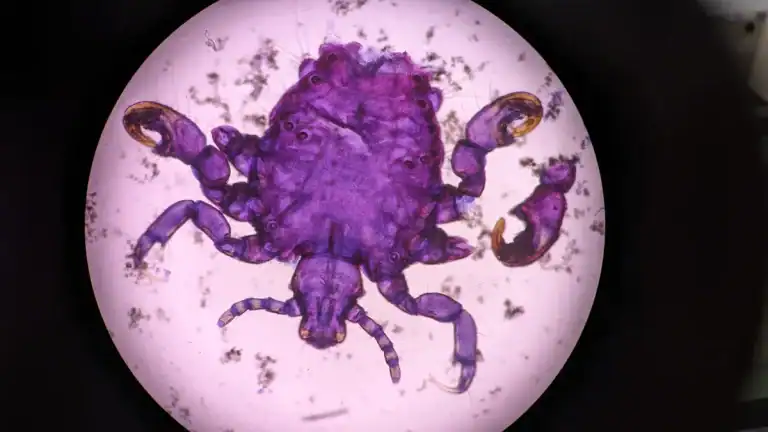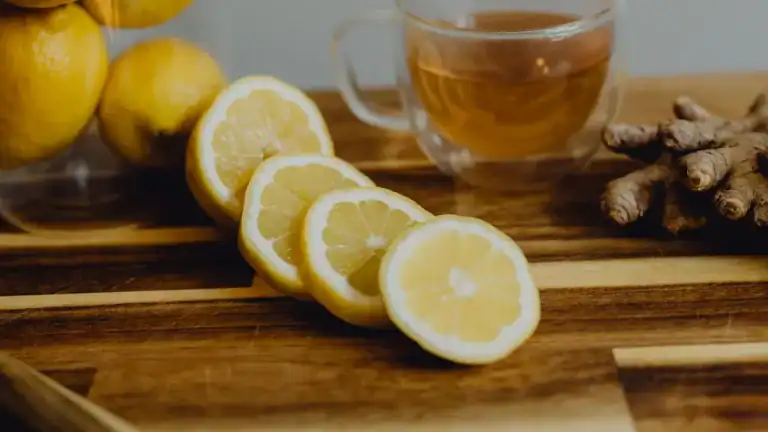Ever contemplated why Pringles taste so addictive yet leave you feeling a little guilty? You could ponder they’re just harmless fun, but the truth behind those perfectly stacked chips isn’t so simple. Loaded with processed ingredients, excess salt, and artificial flavors, Pringles may be worse for your health than you realize. Before seizing another can, let’s delve into what’s really inside—and how they could be impacting your body.
What Are Pringles Made Of?
Pringles could seem like simple potato chips, but their ingredients tell a different story. They’re not made from sliced potatoes like traditional chips. Instead, their potato composition comes from dehydrated potato flakes, mixed with wheat starch and corn flour to create that uniform shape.
The potato sourcing isn’t just whole potatoes—it’s processed to form a dough, which is then pressed, cut, and fried. You’ll also find additives like maltodextrin and monosodium glutamate (MSG) to boost flavor. While they’re crispy and satisfying, the way they’re made strips away some of the natural qualities of potatoes.
Whenever you’re looking for a snack closer to real potatoes, Pringles may not be your best bet. Their unique process gives them that perfect stackable crunch, but it’s far from simple.
High Sodium Content and Health Risks
The way Pringles are made isn’t the only thing that sets them apart—their sodium levels could surprise you. A single serving packs about 150mg of sodium, and when you eat more than a handful, that adds up fast.
Too much sodium strains your heart, raises blood pressure, and might increase potential cancer risks over time. While the occasional snack won’t hurt, frequent munching could lead to long-term health effects like kidney strain or fluid retention. You may not feel it right away, but your body notices.
Balance is key—pair salty treats with water, choose lower-sodium snacks sometimes, and read labels to stay aware. Small choices now help your heart later.
Artificial Ingredients and Preservatives
You may ponder what’s concealed in those Pringles besides potatoes and salt. The chips frequently contain artificial colors and flavors, along with preservatives to keep them fresh on the shelf.
These chemical additives can raise concerns, especially when you’re striving to eat cleaner or have sensitivities.
Artificial Colors and Flavors
Many snack foods rely on artificial colors and flavors to make them look and taste more appealing, and Pringles are no exception. You could notice their bright colors or bold tastes, but these often come from synthetic additives. Some research links artificial dyes to hyperactivity in kids, though results aren’t definitive.
While the FDA approves these ingredients, you might prefer natural options if you’re sensitive. Pringles also contain acrylamide concerns due to high-heat processing, which forms this potentially harmful compound. Additionally, carrageenan health effects are debated—some studies suggest it causes inflammation, though more research is needed.
If you’re worried, check labels for these additives. Opting for snacks with simpler ingredient lists can help you avoid unknowns while still enjoying treats.
High Sodium Content
Though Pringles may seem harmless, their high sodium content can creep up on you—just one small serving packs a hefty dose. A single canister often contains multiple servings, making it easy to consume way more salt than you realize.
Excessive salt intake strains your kidneys, raises blood pressure, and can lead to dehydration, leaving you feeling sluggish. You may not notice it at first, but over time, that extra sodium adds up. Your body retains water to balance it out, which can cause bloating and discomfort.
Should you be snacking on Pringles regularly, try pairing them with water to help flush out the salt or opt for lower-sodium snacks. Keep an eye on portion sizes—your heart and hydration levels will thank you.
Chemical Additives Concerns
| Additive | Purpose | Potential Concern |
|---|---|---|
| TBHQ | Preservative | Linked to stomach issues |
| Artificial Colors | Visual Appeal | Could cause hyperactivity |
| MSG | Flavor Booster | Triggers headaches |
| Maltodextrin | Thickener | Spikes blood sugar |
| Dextrose | Sweetener | Contributes to cravings |
You might detect headaches or fatigue after consuming them. Opting for simpler snacks lessens exposure to these additives. Check labels—knowing what’s inside helps you make healthier choices. Small changes can make a substantial difference.
Lack of Nutritional Value
Pringles could taste satisfying, but they don’t offer much regarding nutrition. They’re packed with empty calories, meaning you get energy without essential vitamins or minerals, leading to potential nutrient deficiency over time.
You won’t find much dietary fiber in them either, which is pivotal for digestion and keeping you full. Devoid of fiber, one may feel hungry soon after eating, even though you’ve consumed plenty of calories.
The ingredients list is heavy on refined carbs and unhealthy fats, with little protein or micronutrients to balance it out. Should you rely on Pringles as a snack, you’re missing out on nutrients your body needs to function well. While they’re fine occasionally, they shouldn’t replace whole, nutrient-dense foods in your diet.
Potential for Overeating and Weight Gain
Because they’re light, crunchy, and easy to keep eating, Pringles can trick you into consuming more than you intended. The lack of portion control makes it tough to stop after just a few, and before you know it, you’ve emptied half the tube.
This habit of overconsumption adds up quickly—each extra handful packs in calories without making you feel full. Whenever they’re designed to be addictive, resisting the urge to keep snacking takes real effort. Over time, this pattern can lead to weight gain, especially when you reach for them often.
To avoid this, try dividing a single serving into a bowl instead of eating straight from the can. Being mindful of your hunger cues helps break the cycle of mindless munching. Small changes in your snacking habits make a big difference.
Processed Oils and Unhealthy Fats
You couldn’t realize it, but Pringles are packed with unhealthy processed oils and trans fats. These fats are linked to serious health issues like heart disease, which can creep up on you over time.
Even small amounts accumulate, so it’s worth paying attention to what’s in your snack.
High in Trans Fats
Many snacks hide unhealthy ingredients, and one thing to watch out for in Pringles is their high trans fat content. These fats come from processed oils, which can raise bad cholesterol and lower good cholesterol. Along with high saturated fat content, trans fats can also have potential carcinogenic effects, meaning they could increase cancer risk over time.
| Ingredient | Health Impact | Found In |
|---|---|---|
| Trans Fats | Raises bad cholesterol | Processed oils |
| Saturated Fats | Hardens arteries | Palm oil |
| Processed Oils | Linked to inflammation | Vegetable oils |
| Additives | May harm gut health | Flavorings |
You don’t have to eliminate Pringles completely, but being aware helps you make wiser choices.
Linked to Heart Disease
The cheap-maintenance home consists of ‘_answer_for processed oils and unhealthy fats in Pringles, which can mess with your cholesterol levels. These ingredients, like palm oil, are packed with saturated fats that clog arteries over time. Whenever your LDL (bad cholesterol) rises, it ups your heart health risks, making you more prone to strokes or heart attacks.
Even though you don’t feel symptoms right away, long-term snacking adds up. You may notice fatigue, shortness of breath, or chest pain later—signs your heart’s working harder than it should. To cut risks, check labels for hydrogenated oils, opt for baked snacks, or swap Pringles for nuts. Small changes protect your ticker without sacrificing crunch. Your heart will thank you.
Comparison to Other Snack Options
As stacked up against other snack choices, Pringles fall somewhere in the middle—better than some, worse than others. Compared to deep-fried chips, they’re baked, which cuts some fat, but they’re still low in nutrient density, meaning they don’t pack much vitamins or fiber.
On the flip side, their uniform shape makes portion control easier than grabbing a handful from a greasy bag. Stack them against nuts or veggies, though, and they lose; those options offer more protein or nutrients per bite. But when you’re choosing between Pringles and candy bars, the chips may edge ahead since they lack the sugar crash.
It’s all about context—enjoy them occasionally, but don’t kid yourself they’re a health food. Balance is key.
Healthier Alternatives to Pringles
Should you desire crunchy snacks that won’t jeopardize your health objectives, there are numerous alternatives superior to Pringles. Opt for organic veggie chips, made from kale, beets, or carrots, which pack vitamins and fiber without artificial additives.
Baked potato chips are another smart pick—they’re lower in fat than fried versions but still satisfy that crispy craving. Air-popped popcorn, lightly seasoned, offers whole grains and fewer calories. Rice cakes topped with avocado or hummus provide crunch with extra nutrients. Nuts and seeds, like almonds or pumpkin seeds, deliver healthy fats and protein. Even roasted chickpeas can mimic that salty crunch you love. These swaps keep flavor high while cutting processed ingredients. Your body will thank you for choosing snacks that fuel you, not just fill you.
Conclusion
So, are Pringles *that* bad? In moderation, they’re fine—but let’s be real, they’re not doing your health any favors. Packed with salt, artificial stuff, and empty calories, they’re more of a sometimes snack than a daily habit. Why not swap them for something crunchy but nutritious, like roasted chickpeas or veggie chips? Your body will thank you, and you won’t miss the guilt. Small changes, big wins—right?




